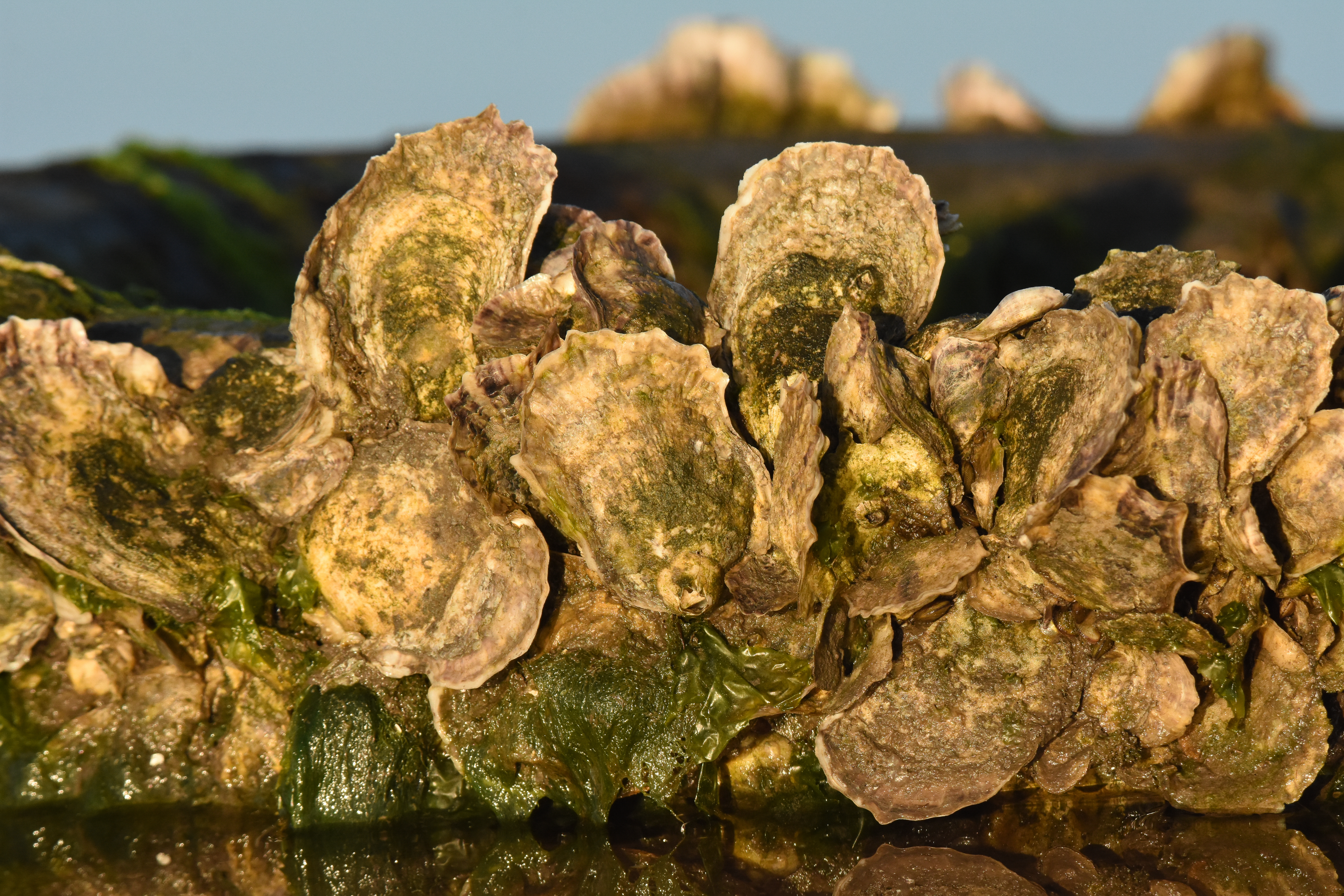Eastern oyster
(Crassostrea virginica)

Description
The eastern oyster (Crassostrea virginica) also called the Atlantic oyster, American oyster, or East Coast oyster is a species of true oyster native to eastern North and South America. Other names in local or culinary use include the Wellfleet oyster, Virginia oyster, Malpeque oyster, Blue Point oyster, Chesapeake Bay oyster, and Apalachicola oyster. C. virginica ranges from northern New Brunswick through parts of the West Indies and south to Brazil. It is farmed in all of the Maritime provinces of Canada and all Eastern Seaboard and Gulf states of the United States, as well as Puget Sound, Washington, where it is known as the Totten Inlet Virginica. It was introduced to the Hawaiian Islands in the nineteenth century and is common in Pearl Harbor. The eastern oyster is an important commercial species. Its distribution has been affected by habitat change; less than 1% of the population present when the first European colonists arrived is thought to remain in the Chesapeake Bay and its tributaries. Like all oysters, Crassostrea virginica is a bivalve mollusk with a hard calcium carbonaceous shell that protects it from predation. This particular type of oyster is important to its ecosystem. Like all oysters, C. virginica is a filter feeder. It sucks in water and filters out the plankton and detritus to swallow, then spits the water back out, thus cleaning the water around it. One oyster can filter more than 50 gallons of water in 24 hours. Eastern oysters also provide a key structural element within their ecosystem, making them a foundation species in many environments, and they serve as ecosystem engineers in western Atlantic estuaries. Like coral reefs, oyster beds provide key habitat for a variety of different species by creating hard substrate for attachment and habitation. Oyster beds have an estimated 50 times the surface area of an equally sized flat bottom. The beds also attract a high concentration of larger predators looking for food. The eastern oyster, like all members of the family Ostreidae, can make small pearls to surround particles that enter the shell. These pearls, however, are insignificant in size and of no monetary value; the pearl oyster, from which commercial pearls are harvested, is of a different family. Unlike most bivalves, whose shells are aragonite, adult eastern oysters have calcite shells. The larvae, however, retain the aragonite shell of their ancestors.
Taxonomic tree:







